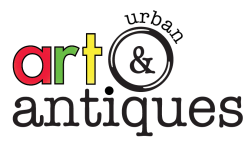You can visit Santa Fe for days and not have enough time to go through all of the galleries and shops. Yet that doesn’t seem to keep anyone away from the many shows featuring some spectacular objects.
Objects of Art in Santa Fe was my first, and for now only, show there. If you expect an abundance of Native American and Western items, you won’t be disappointed. However if your interest falls outside of those categories or if you don’t know exactly what you want to see, you wouldn’t be disappointed either.
Shows are changing, and in many cases disappearing, but some remain strong. The show’s promoters Kim Martindale and John Morris also produce The Antique American Indian Art Show, which follows Objects of Art.
This is an upscale, walled show. It’s obvious the dealers are carefully selected and the show prevents inferior merchandise from being presented. That’s a hard thing to do for promoters. There’s a real balancing act between opening things up to attract new audiences and maintaining quality. You can’t just appeal to the masses, somehow you have to be a taste-maker. That may be even harder when the show is named Objects of Art.
Maybe art is a matter of taste, but it’s less often that quality so subjective. Objects of Art does quality well, whatever the category.

Modern 2.0 in Santa Fe even presented vintage electronic stereo equipment including a 1980s Braun system from Germany with an early compact disc player. That may not be what comes to mind when wrapping your mind around what an object of art may be, but it was conceived by notable designers, Dieter Rams, and Peter Hartwein.
Many of the shows that are having a rough time, or have gone into the annals of history, are ones that limit things by age-they’re all about the idea of antiques. There’s less of an interest in how old something is today. More and more, quality is the only differentiator. The higher-end shows all seem to be incorporating recent objects in some way. The percentage of newer items here seems to be greater than most. While some of that is art, there are also other categories of recent merchandise represented, including clothing and furniture.
To me, that’s completely reasonable if the quality is there and the items are not readily available elsewhere. The inclusion of unique new items is necessary considering even many items more than 100 years old were factory-made and mass-produced and readily available with a google search.
Westside Trading Post from California was presenting “sugar art” from California artist Rob-O. The colorful Día de Muertos skull designs were displayed in shadow boxes, and priced starting at less than $1,000. An elaborate example was priced at $5,000.

Barry Friedman was there with two volumes of his book Chasing Rainbows: Collecting American Indian Trade and Camp Blankets. This is an area of items of which I have no knowledge. Friedman surprised me when he said the blankets covered in the books were purchased by Native Americans, used, loved, and given as gifts. They were made in factories in Oregon, Wisconsin, and elsewhere.

Most of the paintings fall into the southwestern art genre. The Taos school (such as Gene Kloss and Gustave Baumann) has a large presence, not only because of their quality, but also the proximity to local and regional collectors. Two paintings by Raymond Johnson are featured from Stevens Fine Art of Pheonix. Both paintings are from the early 1940s when Johnson’s Transcendental Painting Group was forced to disband under the imminent WWII. Yet Johnson still sought an abstract aesthetic in these images. The gradation of spacial relationship comes from pure flat colors overlapping and intersecting each other. It wouldn’t surprise me if Johnson, like other Taos school artists, was inspired to capture the essence of the Land of Enchantment. Interestingly, Blue Heron Gallery from Fallbrook California shows a painting by Emil Bistrram. That completes the Transcendental Painting Group.
If you’re looking for a missing category, there were few traditional European-American antiques. No dolphin candlesticks, mahogany, glass, or Western silver. If there was something that could fall into these categories, it was most likely on the primitive or folky side. That includes a craftsy inlaid table in an Eastlake style.
My first thought when I walked into the door was, this show has interesting stuff. I will want to come every year. That remains true. I can’t wait to go back.



Interesting review Eric. Hopefully next time you are in Santa Fe in August you will have time to experience some of the other wonderful art and antique show the city has to offer.
LikeLike